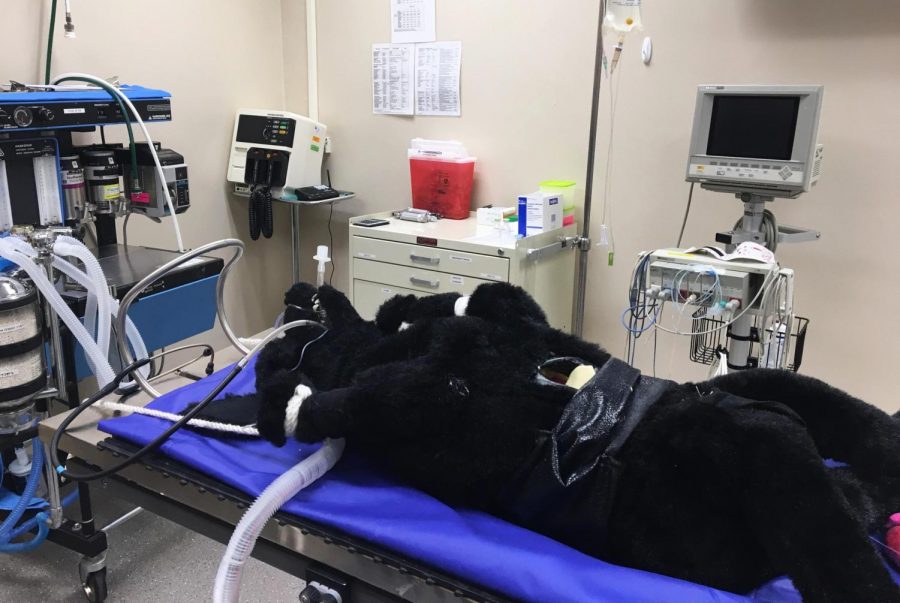Veterinary students can use Stage III to learn how to operate on animals
Stage III gives students opportunity to be comfortable with performing animal surgery
KAYE GILL | THE DAILY EVERGREEN
“Stage III is a hybrid simulation technology,” says Karen Hunt, WSU Office of Research public relations coordinator.
March 4, 2019
WSU’s College of Veterinary Medicine now has a tool that will aid veterinary students in learning how to operate on animals. The tool marks the first of its kind.
“Stage III is a hybrid simulation technology,” said Karen Hunt, WSU Office of Research public relations coordinator. “It was developed to train students and practicing veterinary professionals for high risk procedures that simulated operating rooms.”
Robert Keegan, associate professor at WSU’s Department of Veterinary Clinical Sciences, said veterinary schools used to only use live animals for students to practice on but stopped 15 years ago. All students will still have to operate on a live animal at some point, but Stage III gives them the opportunity to practice with less pressure.
Keegan said Stage III will give students the opportunity to become more comfortable with performing surgery on animals without feeling overwhelmed with having a live animal on the operating table.
While there have been human simulations for years, Keegan said Stage III is the first veterinary simulator on the market. When he developed Stage III, he worked with the WSU College of Nursing in Spokane to learn more about its use of human simulations.
Keegan said in the past, learning how to perform veterinary surgery was like an apprenticeship. An aspiring doctor would shadow a surgeon and watch them perform surgery. The student might have the chance to carry out a surgery, but the overall experience would not be as hands-on.
The old technology requires a specific mannequin and is expensive, Keegan said. Human simulations can range from $250,000 to $500,000. Stage III is adaptable to any mannequin, even an ordinary stuffed animal toy, and is therefore much more affordable.
Stage III will cost users several thousands of dollars in a yearly subscription fee, Keegan said. As of now it is just a software program, but Keegan said he also hopes to distribute a mannequin specifically for the program in the future.
Keegan said this could help veterinarians and doctors in developing countries who are currently unable to afford the technology for the human simulators on the market.
“The cost of using this program is significantly less,” Hunt said. “That enables professors and veterinary professionals … to be able to continue their training and learn surgical procedures, or keep up-to-date with their surgical procedures, in a cost-effective manner.”









